Citrus Cultivation and Care Guide
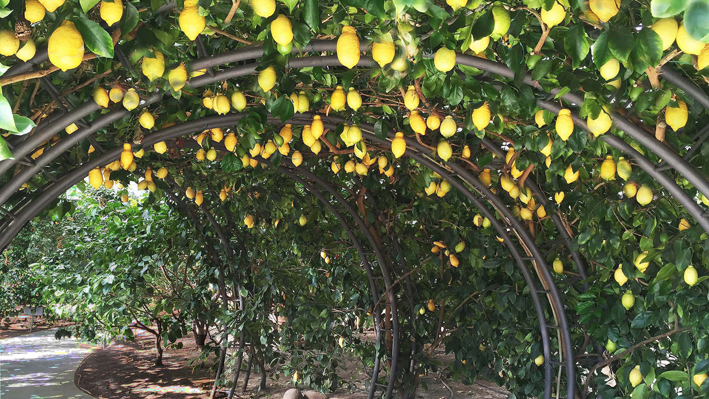
Although Citrus trees originate from India, Asia (including China), nowadays, many varieties are grown extensively throughout Europe and with the changing climate, these plants can be relatively easy to grow in the UK. The results can be very rewarding, including the wonderful fragrance of the citrus flowers. However, success will depend on some important, but very simple, cultivation techniques as we'll outline in this guide.
For the definitive guide to the cultivation of all types of citrus plants, try and obtain the book written by the best citrus growers in Europe, by Oscar Tintori (see appendix).
Light and Temperature
Keep in good light, above 4°C, and ensure as much ventilation as is reasonable, given the weather conditions.
A well ventilated conservatory is ideal (Avoid direct south-facing window positions to prevent scorching), with 3 or 4 months in a sheltered spot outside in warm summer weather, if desired. We keep our citrus outside from May to November.
Citrus plants are happy to stand outside after the spring frosts have ended (usually about the end of May).
Plants should be placed in a shady spot and gradually crept into full sun over the course of a week or so to prevent leaf scorch. They should remain in the sun for the rest of the summer. The more sun the better.
If indoors, keep near a light window in a cool room, with no high heating. Citrus can tolerate 38 °C (100°F) or more, but teperatures above 35°C (96°F) is likely to halt the plant's growth, therefore, they usually grow better outside for the duration of the summer. If they are kept in a conservatory or greenhouse in the summer, they must have ample ventilation.
Water
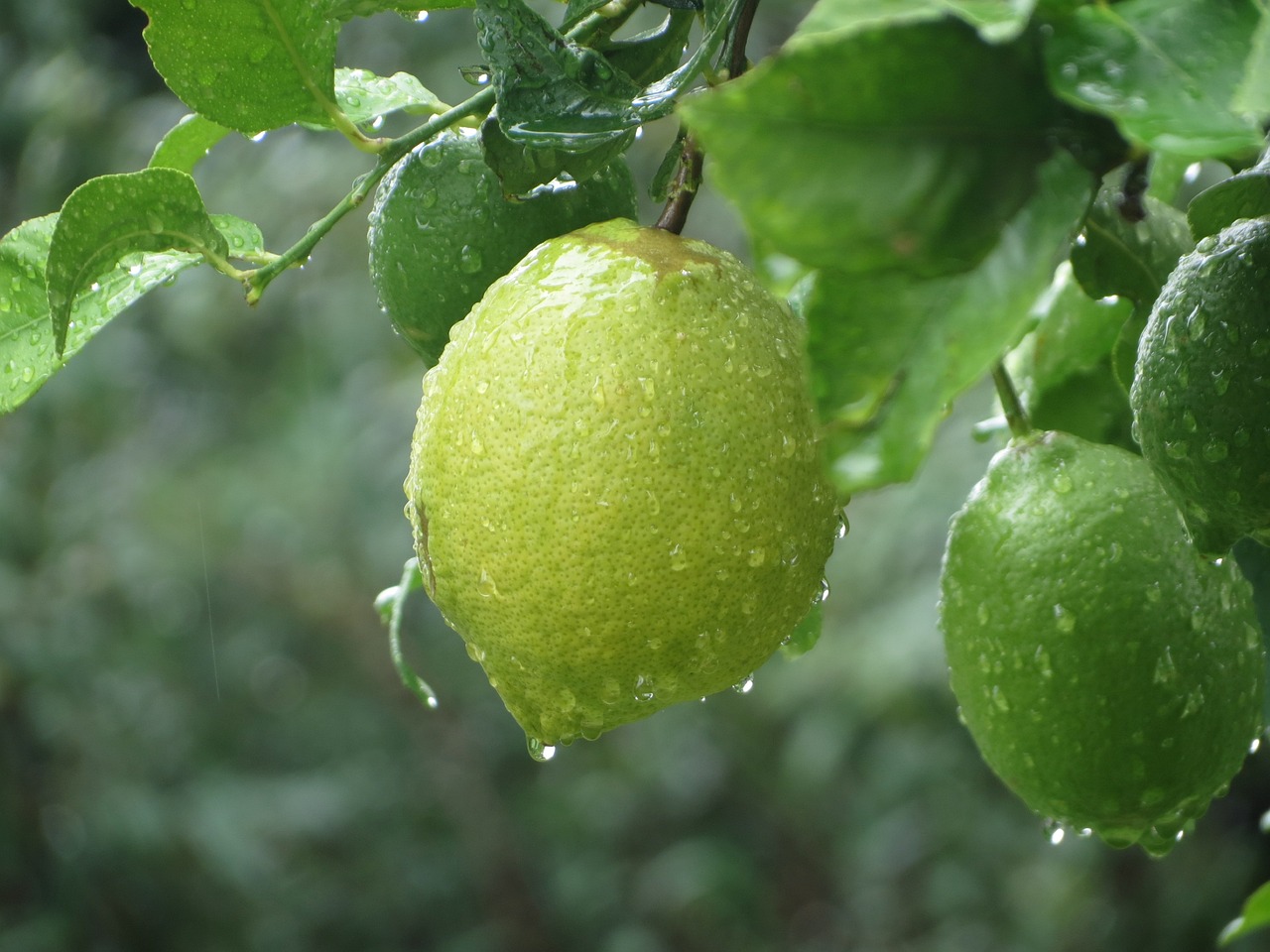
Water thoroughly each time the surface of the compost begins to dry: this may be daily in sunny summer weather, or 2-3-weekly in cloudy winter weather.
Don't give water before the plant needs it or the compost will become soggy and the roots begin to rot. Never allow the plant to stand in water.
Whilst indoors, we suggest standing Citrus on "pot feet" in a tray.
When watering and feeding with liquid fertilizer, water thoroughly, leave for ten minutes and water though the pot with the feed again.
Take the pot outside once or twice a year to wash the compost right through using lots of clean water to remove any build up of excess fertiliser and excretory salts.
Feeding
(Essential for good leaf production and fruiting)
Feed weekly during strong growth periods, preferably with a special Citrus fertiliser containing high trace elements, or with a seaweed-based fertiliser
At the nursery we liquid feed our citrus each time we water.
Repotting

(See below for best soil conditions)
The optimum time to repot citrus plants is at the end of spring when the sap is rising.
It can be done at any time of the year whilst there is active growth but ideally
before the end of August.
The new pot should be 10 – 15cm larger than the original pot.
Avoid buying a pot that is too large, this can cause problems for your citrus plant. This is because the excessive space with collect humidity which can damage the root system.
The choice of pot material is mainly down to individual choice. We generally advice against the use of plastic pots as they can cause the soil to hear up during the high temperatures of summer and get colder in winter.
The ultimate material for citrus plants is terracotta. Not only with their earthy tones enhance the beauty of the plants, they are resistant to temperature change and allow soil to transpire more efficiently.
Repotting a Citrus Plant into a Larger Pot
Removing the plant from the pot should be done delicately. To make it easier, avoid transferring your plant when the soil is very damp as the clump may fall apart. If the roots have covered the sides of the pots then you can trim off any spiralling roots with an ordinary sterile gardener’s knife or secateurs to maintain a nicely shaped root ball.
To ensure good drainage, you can line clay pebbles (Leca) at the bottom of the pot. It's best to add some compost over the top of the pebbles before transferring the plant inside. You will also need to fill in the sides of the complete clod with dry compost gradually in small quantities pressing down to avoid air pockets.
Only fill up to the top of the rootball, the base of the trunk (neck) much be left uncovered.
Once the repotting is complete, water your plant thoroughly. To make sure the water gets through to the center of the rootball, make some small holes using a dibber.
If you are repotting a very large citrus tree, seek professional help from a landscaping team as it will need careful lifting to protect the trunk and branches (as well as your own back!).
Compost
All Citrus trees need a slightly acid compost, with a pH between 6 and 6.5, (Lemons should be slightly lower pH than Oranges). It is also essential that the compost is free draining, as they will not survive in water logged conditions.
Do not use composts containing lime as they will have a higher pH. Most multi-purpose composts also contain lime and have a fairly high pH so should be avoided.
An easy compost mix to make is to use a soil-based compost, such as John Innes No 3 potting compost mixed with 25% drainage materials, such as bark chippings / perlite / horticultural grit to improve the drainage. This will ensure the compost is slightly acidic, can retain moisture, which is important for citrus trees, and that it is also free-draining. Do not be tempted to use left over builders sand for drainage, as this may contain lime.
If you feel unsure about mixing your own compost there are some good pre-mixed commercial peat free composts available.
Commercial suppliers of pre-mixed peat free citrus composts
Miracle-Gro pre-mixed Peat free compost for citrus – Click HERE
Westland pre-mixed Peat free compost for citrus - Click HERE
Clay Pebbles – A good supplier obtain them in larger bags (45 litre) Click HERE
Best Pots for Citrus Trees
The best pots for Citrus Trees are Terracotta pots.
The reason why we recommed this fired clay material is because it is breathable and porous which is great for citrus plants, preventing soil disease and root rot. Even if you should over-water a bit, the roots don’t drown like they can in plastic pots.
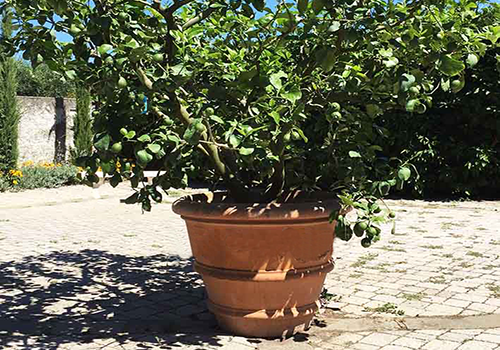
Terracotta pots also slow down the heat transfer between the soil and the outside environment, avoiding a sudden temperature change that can be harmful to citrus plants.
What's more, the clay is fired at very high temperatures, giving them exceptional strength. The greater the firing temperature, the more robust and durable the pot will be to survive years of harsh winters. The high density of the clay, also makes the pots frost resistant.
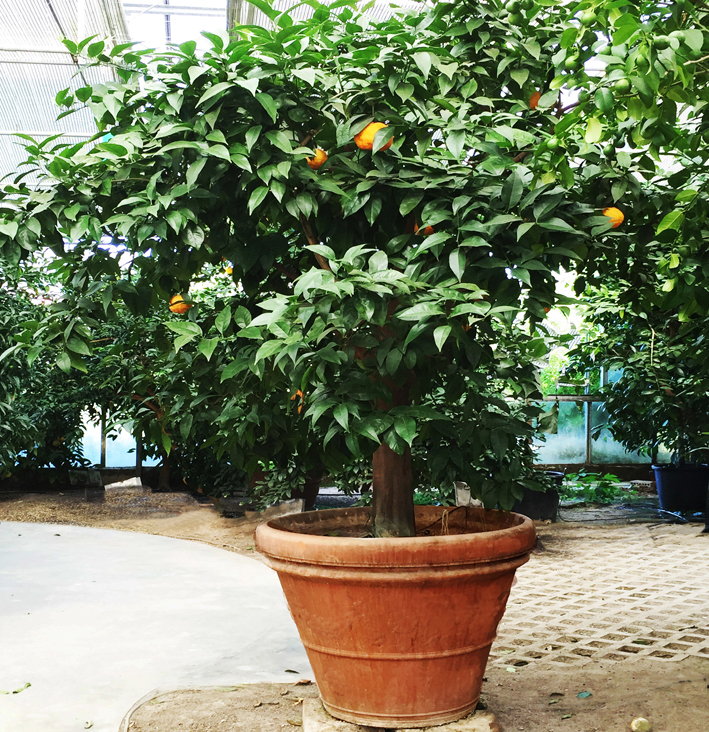
Ultimately, terracotta pots inject a boldness and warmth to outdoor spaces that bring the air of Tuscan summers into our gardens. If you feel like transporting your garden to a warmer climate and dappling in some Mediterranean design, Terracotta is a great choice.
Find out more about the amazing benefits of terracotta HERE.
Pruning
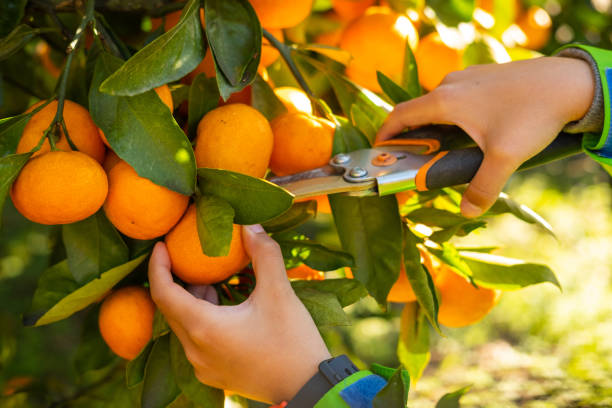
Pinch out growing tips of longer branches to encourage growth near the middle of the tree; and prune to shape if required, just as the new growth is beginning to sprout in the spring.
If you lose all the leaves through drying out, do not despair! Trim back all the branches by one-third, give water again, keep the compost moist but not soaking until the leaves begin to grow again, and then start giving fertiliser and watch the new glossy green leaves grow again.
Citrus usually require very little pruning, naturally becoming well-shaped plants.
Pinching the ends off long, new growth will result in a bushier plant by encouraging sprouting further back.
Lemons can become straggly after a few years and benefit from the occasional hard pruning in early spring. This usually will not mean losing the current year's flowers, as they will soon be produced on the abundance of new growth that should occur.
Citrus will sprout from new, old, and very old wood so if a tree needs tidying up the cuts can be made at any point.
Citrus in Winter
Citrus trees are evergreen and should not lose their leaves during the winter providing that they are positioned correctly. They need to be given enough water, light and the right heating conditions to see them through.
Water
As ever, Citrus trees should be watered whenever the top of the compost is drying out, before the leaves start to droop; and they should be watered right through the pot each time so that the lower part of the rootball does not stay dry. In winter watering may not be for 2- 3 weeks in cool cloudy weather where the temperatures are around 4°C. Whilst indoors we suggest standing Citrus on "pot feet" in a tray.
Never allow the plant to stand in water as the roots will rot.
Light
Try to find the lightest position on the shelves during the winter. There is no danger of scorching by sunlight at this time of year, so you can put them right next to windows, but the plants will need to be moved before they get damaged by strong midsummer sun. Artificial growlights and striplights can be helpful in increasing light levels. Avoid putting plants under shelves or in the shade of larger plants.
Ventilation
Flowers and ripening fruit can give off ethylene gas which can build up, particularly in enclosed spaces. This can lead to leaf and flower drop, and may be responsible for the leaf drop. To keep all plants in best condition, try to open the vents/windows enough to allow for an exchange of air either continuously or 2 or 3 times a day.
Temperature
Citrus prefer to have a cool period in winter, below 10°C, when they can rest. Small plants can be kept within the house on a south facing windowsill or by patio doors, away from radiators and larger plants kept in conservatories or greenhouses. Whilst most Citrus can withstand temperatures just above freezing, they will fare far better if kept warmer. At the nursery we over-winter plants at 4°C (40°f) minimum.
Try to avoid sudden extremes of temperature as this can stress plants and cause leaf
and blossom drop. Temperatures in conservatories can vary considerably between
day and night, ventilate well during sunny days.
In houses, they do not do well in areas of high central heating like Living Rooms where the temperatures with a fire or radiator can rise very high and the air become very dry.
They do better in a cool bedroom or other area where the temperatures do not fluctuate drastically. In garden centres, avoid positioning the plants in the path of a heater or near a radiator.
Losing leaves
If plants do lose many of their leaves, they will most likely re-grow them in the spring. The stems should be cut back but about half to encourage the new growth to come from the middle of the plant, and the plant should be kept only slightly damp until temperatures warm up and new growth starts. Then again follow the rule of watering only when the top of the compost is starting to dry out and watering through the pot everytime.
Most common citrus diseases
When pests and diseases start to take over you citrus trees can suffer quite quickly. To help you identify the most common pests and diseases, and how to treat them, we recommend that you download the following article HERE
The Ultimate Guide to Citrus Plants
For the ultimate guide to the cultivation of Cirtus plants, we are delighted to be able to offer the "Ornamental Citrus Guide" from the authors, Giorgio and Sergio Tintori, who own the Oscar Tinori nurseries in Pescia, a few kilometres from the Pistioia.
Here they produce outstanding specimens of citrus plants using traditional criteria and advanced technology, thanks to constant research into old and new cultivars, to meet the requirements of an extensive and well-informed client base in Italy and many other countries in central and northern Europe.
Your name *









